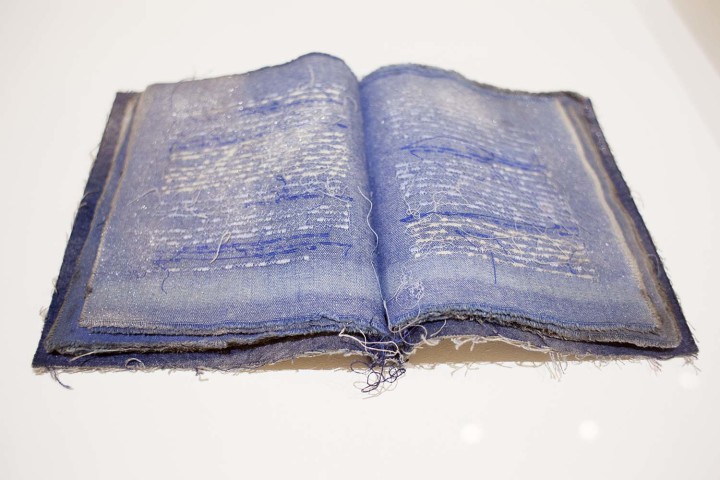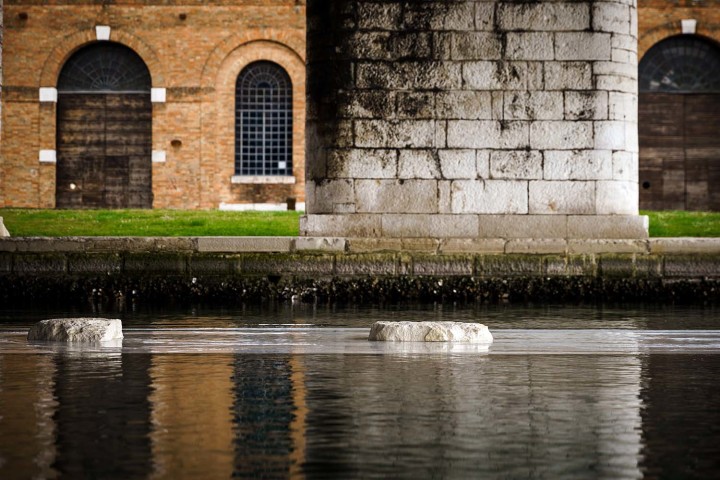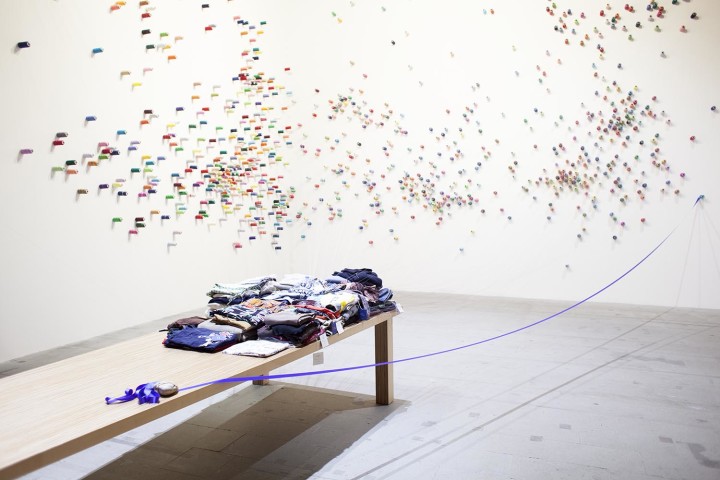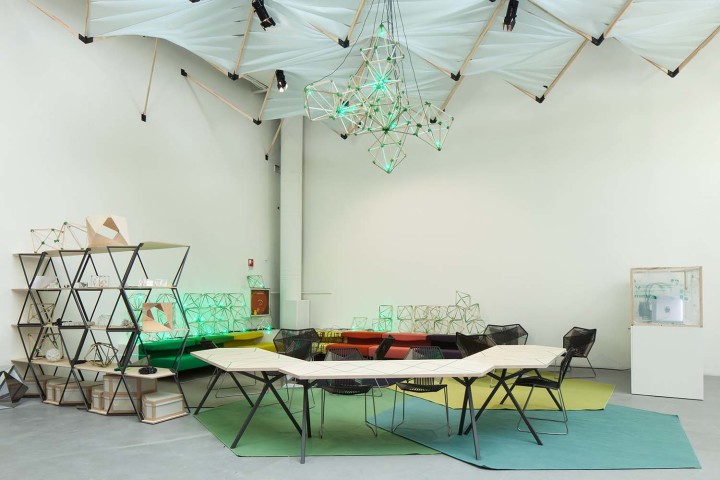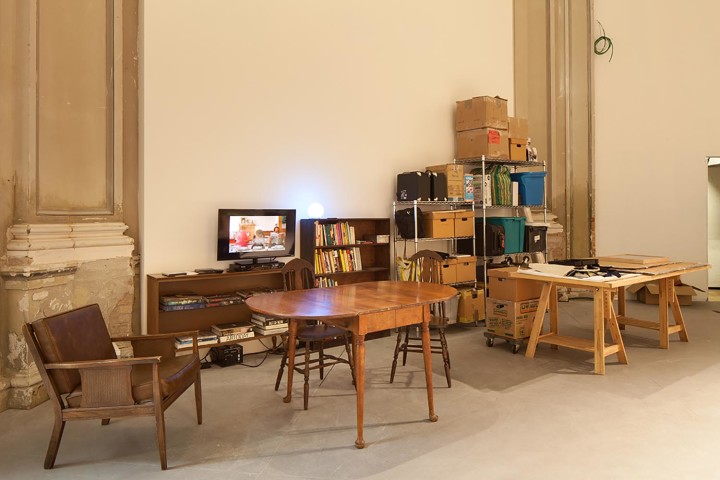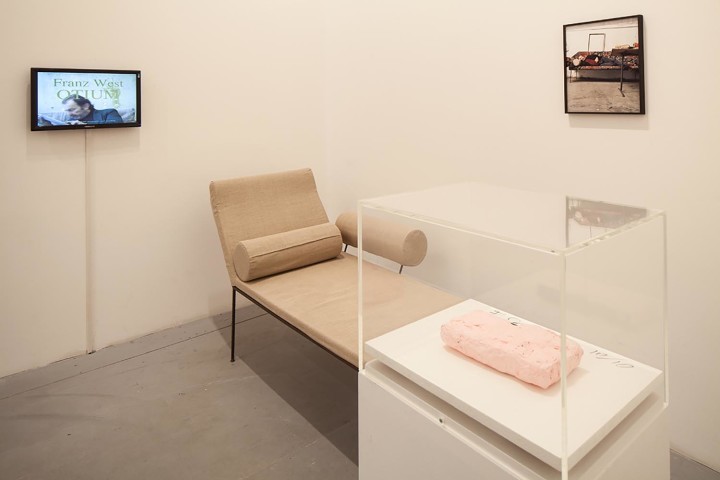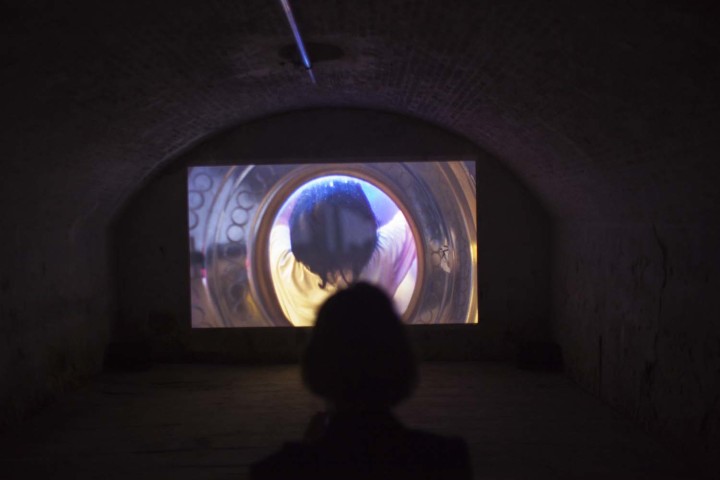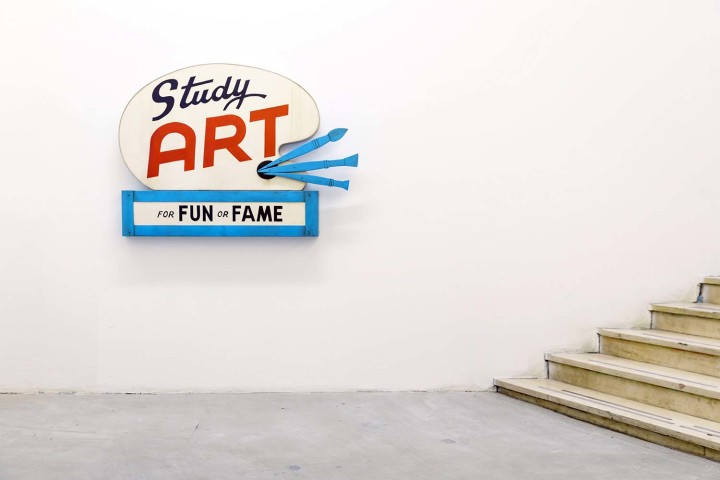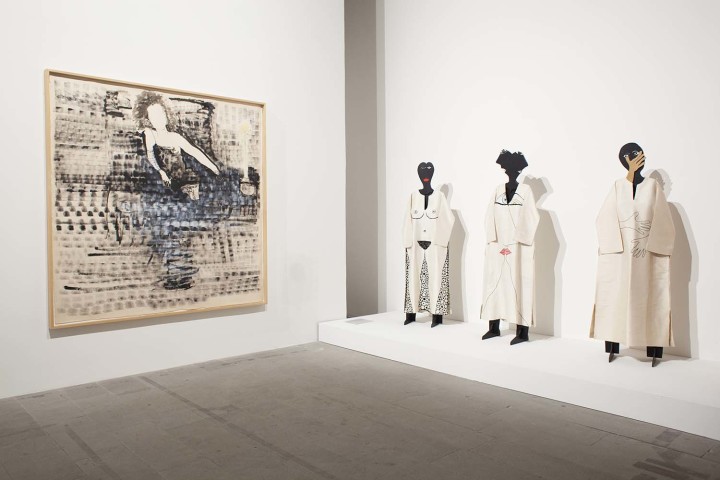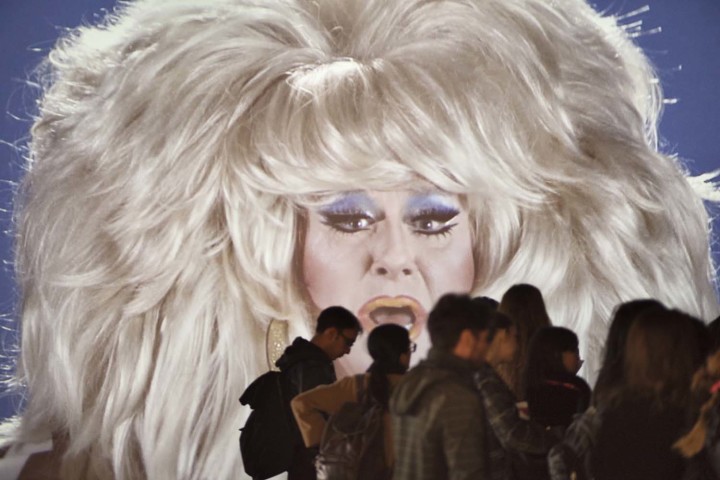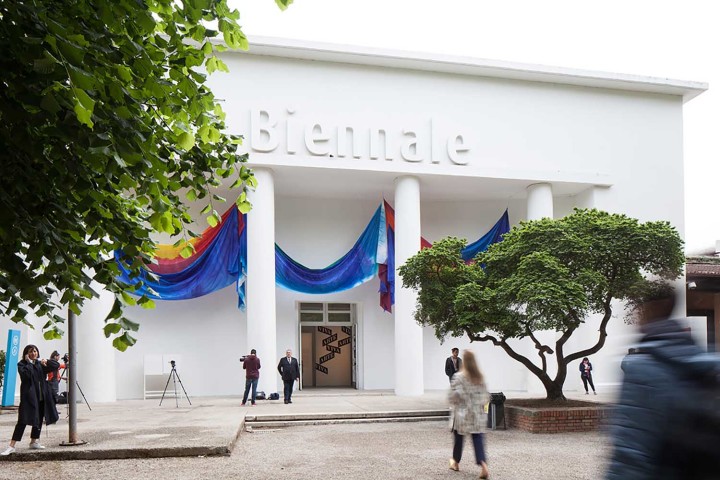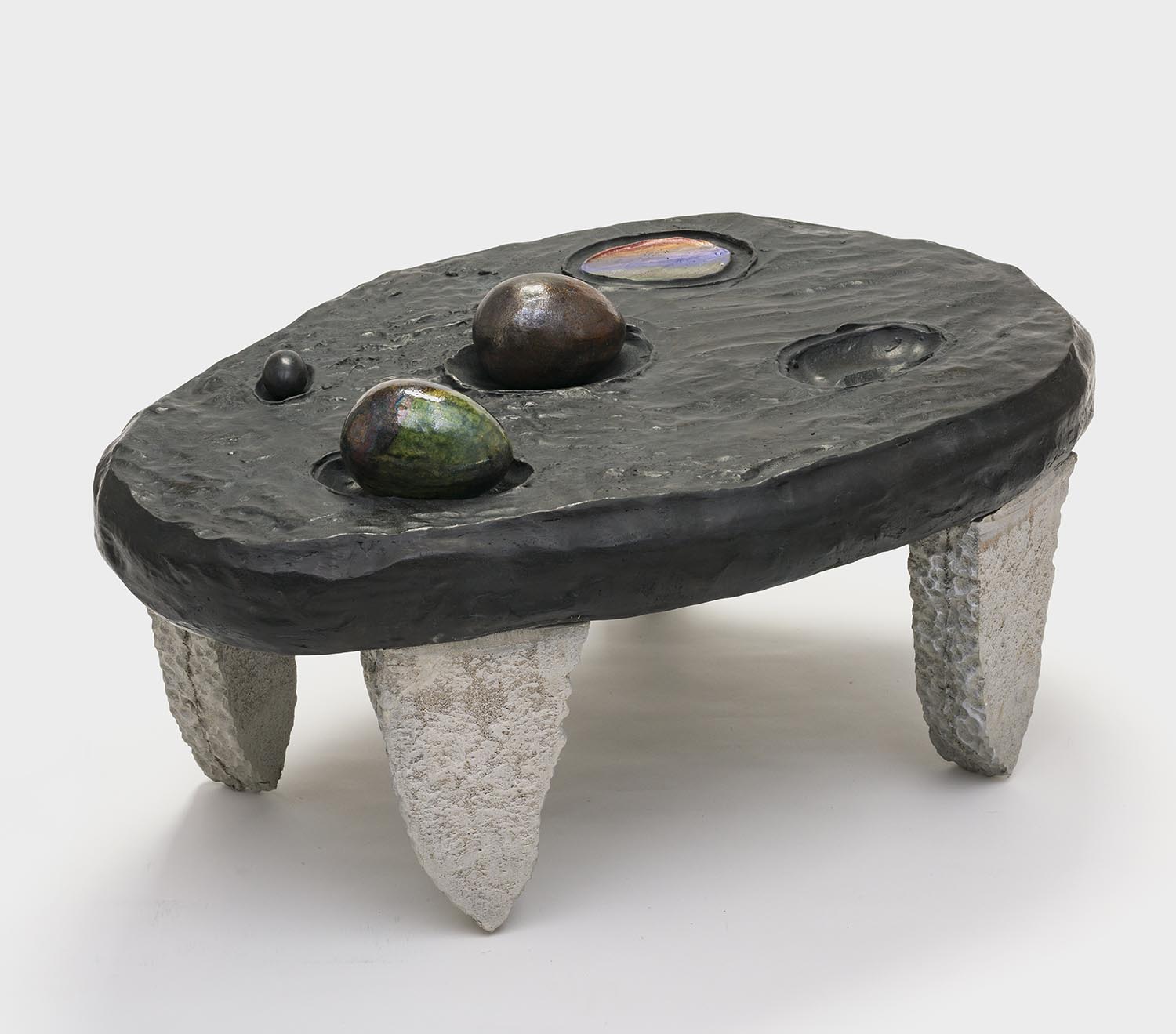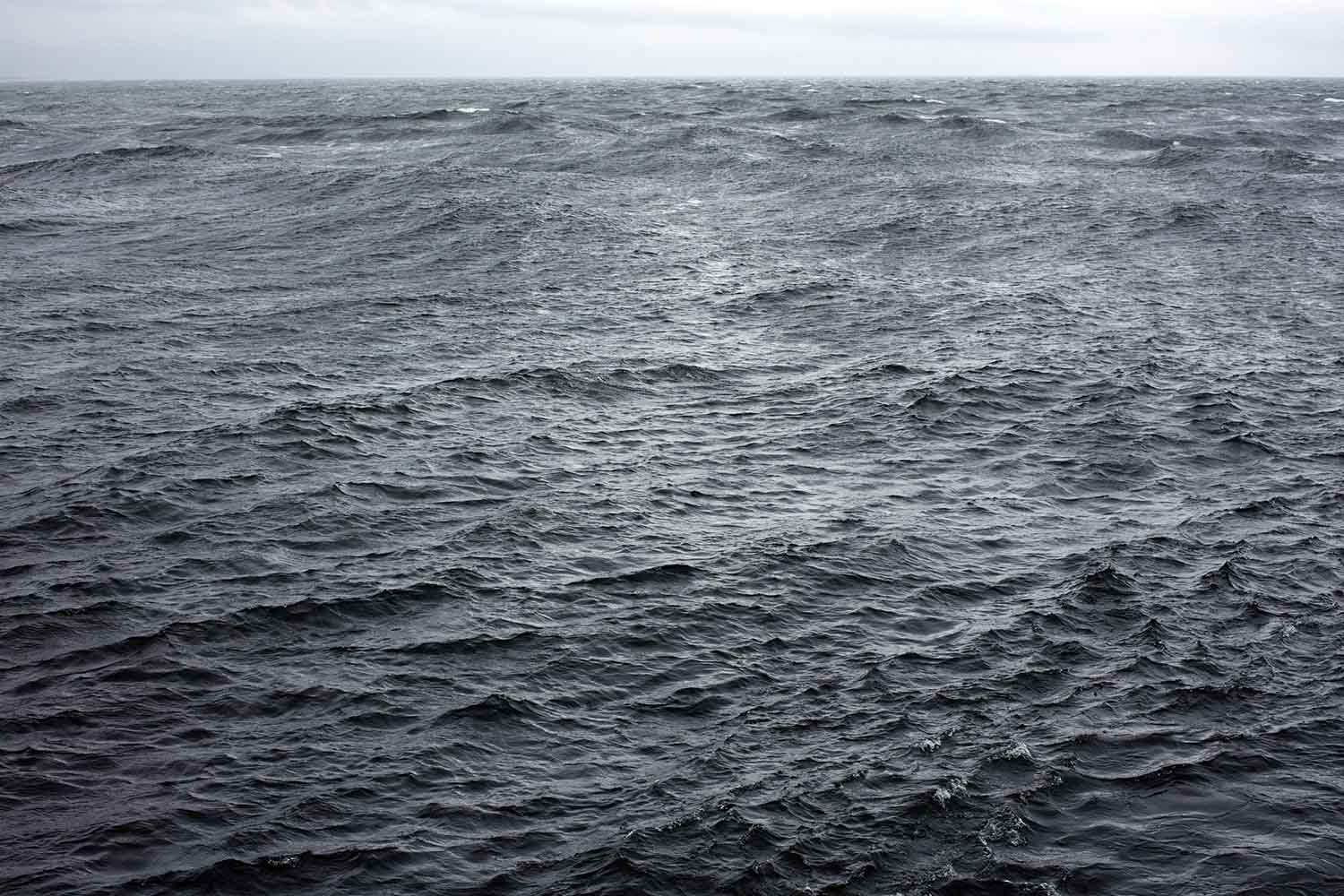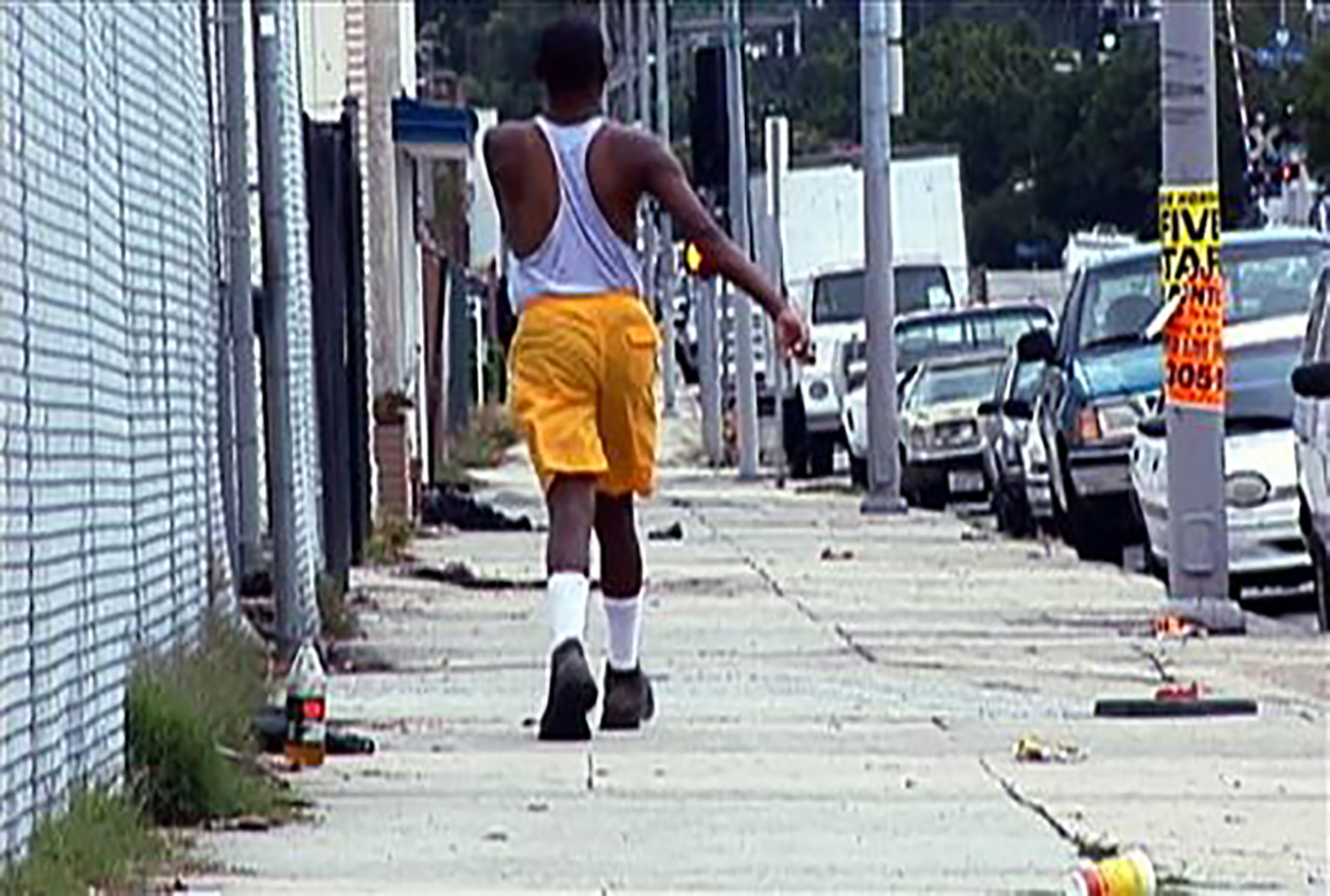At the Sterling Pavilion I find a copy of Representations of the Intellectual by Edward W. Said (Vintage Books, New York, 1996). It’s one of the volumes chosen by Frances Stark for Unpacking My Library, a parallel project within the “Viva Arte Viva” exhibition for which curator Christine Macel has invited participating artists to share their “favorite readings” with Biennale visitors.
Representations collects the talks given by Said on BBC Radio, in 1993, as part of the prestigious “Reith Lectures” series. It’s an impassioned examination of the public role of the intellectual, understood as outsider, “dilettante,” contester: what distinguishes the role, according to Said, “is a spirit in opposition, rather than in accommodation”; a spirit “that grips me, because the romance, the interest, the challenge of intellectual life is to be found in dissent against the status quo at a time when the struggle on behalf of underrepresented and disadvantaged groups seems so unfairly weighted against them” (p. xvii). From a remote shelf in the “Viva Arte Viva” library, the slightly more than one hundred pages of Representations offer themselves to me like an objection to a show that, setting aside the facts of the world in order to rediscover the most genuine expressions of human creativity, presents art as a contemplative, emotional and, at least, therapeutic activity; yet, at the same time, it presents it as a nonprogrammatic and disengaged activity, seemingly discarding that which Said identifies as “the vocation of the intellectual” and therefore of the artist: “maintaining a state of constant alertness” with respect to the exercise of power (p. 23). Prompted instead by the notion of the Latin otium — according to the press release, the interval “of laborious inertia and of the work of the spirit” in which the artwork is born — “Viva Arte Viva” flattens its contents into innocuous displays of isolation and evasion. The vitality of art, which, personally, I have always discerned in the possibility of giving space to feelings of misalignment and antagonism, takes on pastel hues and is consumed in the festivity of the kermesse. (On the other hand, the inoffensiveness of “Viva Arte Viva” justifies the response, bordering on collective hysteria, provoked by a project such as Anne Imhof’s for the German Pavilion, in whose narrative of defiance against institutional power the visitor searching in art for a form of dissent exorcizes precisely his own libido).
A big show that eschews any sense of the epic inevitably compromises itself. Such is the case with “Viva Arte Viva,” in which the works shown are rarely dramatic and, though neatly organized, attend one another without an engaging syntax, without a climax. The installation by Liliana Porter, El hombre con el hacha y otras situaciones breves (The Man with the Ax and Other Brief Situations, 2013) — a diorama in which the figurine of a man holding a hatchet seems responsible for an apocalyptic landscape that pours forth, a crescendo of waste that culminates in a real, eviscerated piano — is not only an exception that proves the rule, but, presented in one of the last rooms of the Arsenale, seems like a sarcastic metaphor for what this show is not. The vehemence that permeates Porter’s installation is largely missing in Macel’s exhibition.
Instead, “Viva Arte Viva” unfolds through idyllic representations. On the one hand, there is otium, the inactivity that stands as the prerogative of artistic activity. Mladen Stilinović’s photographic series Artist at Work (1978), in which Stilinović depicts himself serenely asleep in his bed, is echoed by a group of works by Franz West, among them photographs showing West languishing on one of his chaise longues; a drawing and collage by Frances Stark, Behold Man! (2013), in which Stark depicts herself chilling on her sofa, surrounded by a picture gallery displaying her own visual references; and an installation by Yelena Vorobyeva and Viktor Vorobyev, The Artist is Asleep (1996), a reconstruction of a domestic bedroom environment in which an individual appears asleep. During my visit to “Viva Arte Viva,” I even encountered Dawn Kasper, whose contribution consists of having relocated her studio to within the show for the entirety of its duration, sleeping on a cot.
Now, every worker has the unquestionable right to rest. But in “Viva Arte Viva,” unproductiveness does not affirm itself as a counterproject to the logics of productivism — logics from which artistic work is obviously not exempt; and the inertia of doing appears more like the artist’s privilege, an attitude rooted in her lifestyle. (In the Central Pavilion, surrounded by all these artists at rest, the only ones “busy” are the young refugees assembling the Green Light lamps in Olafur Eliasson’s workshop; meanwhile Eliasson’s paternalistic project necessarily ends up insinuating a disparity founded on the exploitation of the workforce, ironically in the same room where Marx’s Capital was read out loud two years ago.)
At the other extreme of the exhibition’s thematic parabola lies transcendence. A project of emancipating the work of art from facile materialistic readings is needed and warranted; but Macel’s exploration of metaphysics in art doesn’t go much further than presenting nonnarrative and hieratic works. Indeed, suspension is the most frequent “figuration” here: in Broken Fall (organic) (1971) by Bas Jan Ader, the artist is suspended over a canal; in Law of Situation (1971/2017) by Kishio Suga, ten flat stones lie suspended on the surface of a body of water; in The Worldly Cave (2017) by Zhou Tao, groups of individuals are suspended in limbo-environments between dream and reality. There are many more similar examples. But the mesmerizing power of these works is short-circuited: Jan Ader soon falls into the canal beneath him; Suga’s stones rest on a visible fiberglass platform; and Zhou’s surreal spaces are clearly ruins of industrial civilization. Contrary to the curator’s metaphysical aspirations, for me, these works resist spirituality by falling back on reminders that physics, as well as equally pervasive and concrete powers, are at work in artists’ practices.
Even in the realm of direct action, which “Viva Arte Viva” does tangentially consider, Macel chooses gestures that are underwritten by an ambition to redefine an ideal of collectivity alongside others that are instead more acupunctural “practices of everyday life,” the latter foiling the former. This happens, for example, in the second room in the Arsenal, in which Lee Mingwei’s action The Mending Project (2009–15) is placed alongside photographs documenting Maria Laii’s collective action Legarsi alla montagna (Tying Oneself to the Mountain, 1981). In The Mending Project, Mingwei or one of his assistants offers to mend articles of worn clothing given to them by visitors, using colored thread from the dozens of spools hanging on the walls around the work table; eventually, they store the repaired items in the exhibition space. In Legarsi, Lai used a ribbon to “tie” together the houses (and the families) of her native Sardinian village of Ulassai, and in turn tie Ulassai to the mountain that overhangs it. Both of these works are rituals for exorcizing individualism, first of all on a micropolitical level; ça va sans dire that the challenge Lai throws at her community — to think itself as a holistic organism, fused with the landscape in which it is immersed — betrays a “vocation” much broader in scope. By virtue of this vocation, and despite being symbolic and anti-monumental, Legarsi emerges as “grandiose”; yet the proximity of Mingwei’s bid to “tie” visitors’ clothes to the exhibition space, in what feels like merely another participatory art-cum-stitching project, annihilates Lai’s gesture.
In Legarsi, Lai demonstrates what the artist can and must be: to say it once again with Said, “a crusty, eloquent, fantastically courageous and angry individual for whom no worldly power is too big and imposing to be criticized and pointedly taken to task” (p. 8). Unfortunately, in “Viva Arte Viva,” her voice — and the voices of several other committed artists — is undermined by a system of loose associations. If these facilitate the visitor’s approach to the conceptual and formal strategies employed by artists, they suffocate artists’ promptness in responding to historical and political circumstances — the challenge of every intellectual life.

